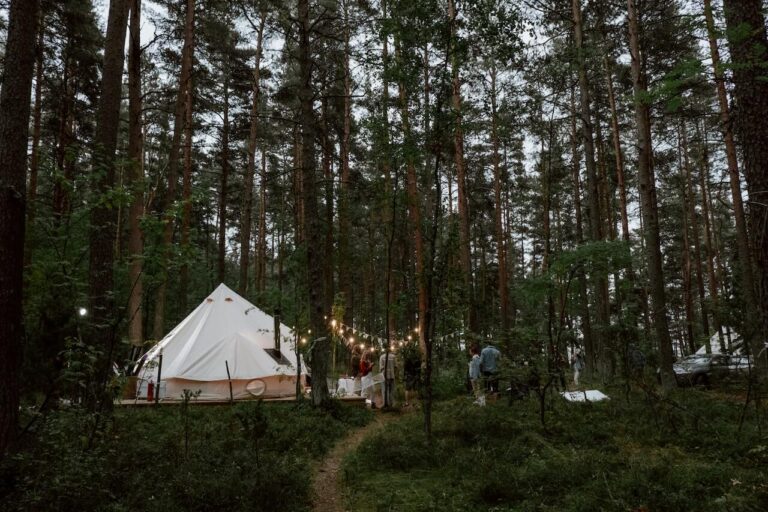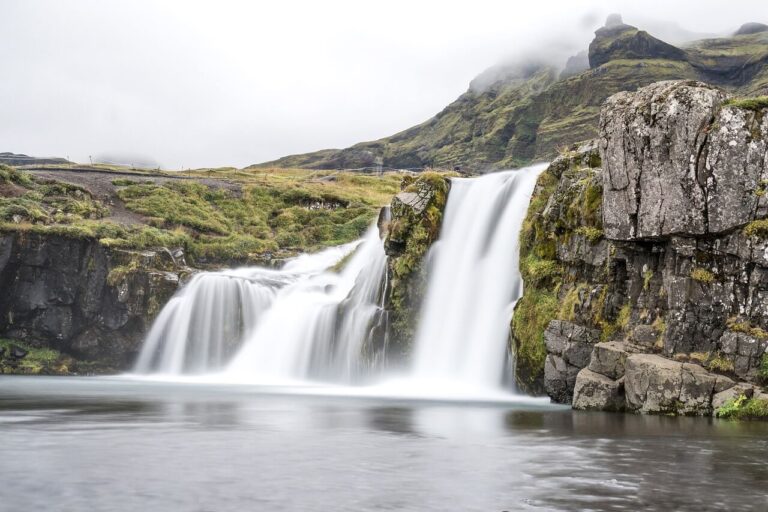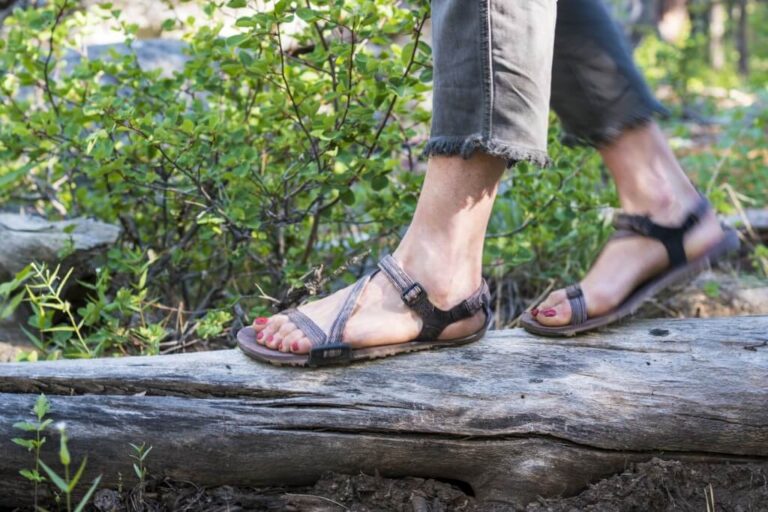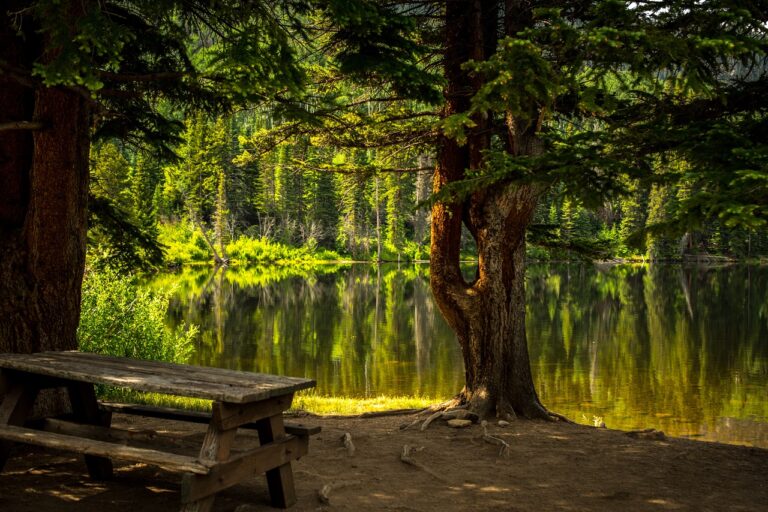
Introduction
Camping in the desert regions of the USA offers a unique and unforgettable outdoor experience. With its vast, rugged landscapes, unique wildlife, and extreme temperature fluctuations, camping in the desert regions presents both challenges and rewards. From the red rock formations of Utah’s Canyonlands National Park to the sprawling dunes of Death Valley, the desert regions of the USA are home to some of the most spectacular and awe-inspiring natural wonders in the world. However, camping in these remote areas requires careful planning and preparation to ensure a safe and enjoyable trip.
Why camping in the desert regions is unique?
Camping in the desert regions is a unique experience due to its distinct landscapes and the sense of remoteness it offers. Unlike other camping locations, desert camping is characterized by vast, open spaces with little to no vegetation, which can be a stark contrast to the lush, wooded areas of other camping sites. The arid climate of the desert also means that the terrain and wildlife are different, providing an entirely new set of experiences for campers.
The extreme temperatures and lack of resources require campers to prepare adequately and be self-sufficient. This self-reliance, combined with the unique landscapes and wildlife, makes camping in the desert regions a unique and challenging adventure.
Best Time of Year for Camping in the Desert Regions of USA
Seasonal climate patterns
The desert regions of the USA are known for their extreme temperature fluctuations, with scorching hot summers and freezing cold winters. It is essential to understand the seasonal climate patterns when planning a camping trip in the desert regions to ensure a safe and enjoyable experience.
In general, the best time of year for camping in the desert regions of the USA is during the spring and fall months. During the spring, the temperatures are usually mild, and the wildflowers are in bloom, making for a beautiful and colorful landscape. The fall months are also an excellent time to camp in the desert regions, with cooler temperatures and clear skies that offer perfect stargazing conditions.
During the summer months, temperatures in the desert regions can soar above 100°F, making it challenging to camp comfortably. Additionally, the risk of heat exhaustion and heatstroke is high during this time, making it dangerous to spend extended periods outdoors. In the winter, the desert regions can get very cold, with temperatures dropping below freezing at night. Snow and freezing temperatures can make camping challenging and uncomfortable.
How to plan your trip according to the weather
When planning a camping trip in desert regions, it is essential to check the weather forecast and plan accordingly. It is also crucial to bring appropriate clothing and gear to deal with the extreme temperatures and potential weather conditions.
If camping during the summer months, it is recommended to camp at higher elevations or near bodies of water that can provide relief from the heat. It is also crucial to stay hydrated and avoid prolonged exposure to the sun during the hottest parts of the day.
During the winter months, it is important to bring warm clothing, insulated sleeping bags, and a reliable heating source to stay warm during the cold nights. It is also crucial to check the weather forecast regularly and be prepared for any potential snow or ice.

Essential Gear for Camping in the Desert Regions of USA
Basic camping gear
· Appropriate clothing, including a hat, sunglasses, and lightweight, breathable fabrics, must also be brought to protect against the sun’s harsh rays.
· A first aid kit, portable water filter or purification tablets, and a map and compass or GPS device should also be included.
Gear specific to desert camping
Camping in the desert regions of the USA requires additional gear to protect against the extreme temperatures and dry, dusty conditions. It is important to bring plenty of water, as dehydration is a common risk in desert environments. A hydration system, such as a CamelBak or hydration bladder, is a convenient and efficient way to carry water while hiking or exploring. Additionally, it is recommended to bring a wide-brimmed hat, long-sleeved shirts, and pants to protect against the sun and reduce the risk of sunburn.
It is also important to bring gear that can provide shade and relief from the sun’s heat, such as a pop-up canopy or sun shelter. A portable, battery-powered fan can also provide much-needed relief during the hottest parts of the day. Finally, it is recommended to bring a sturdy pair of hiking boots or shoes with good traction to navigate the rugged terrain.
Renting vs. buying gear
- Renting camping equipment can be a cost-effective option for those who are new to camping or do not have the necessary gear.
- Outdoor retailers and rental companies offer rental equipment, including tents, sleeping bags, and camping stoves.
- However, for those who plan on camping frequently or for an extended period, purchasing their own gear may be more cost-effective in the long run.
- Quality camping gear can be an investment, but it can also last for many years with proper care and maintenance.
- It is important to consider the frequency and duration of your camping trips before deciding whether to rent or buy camping gear.
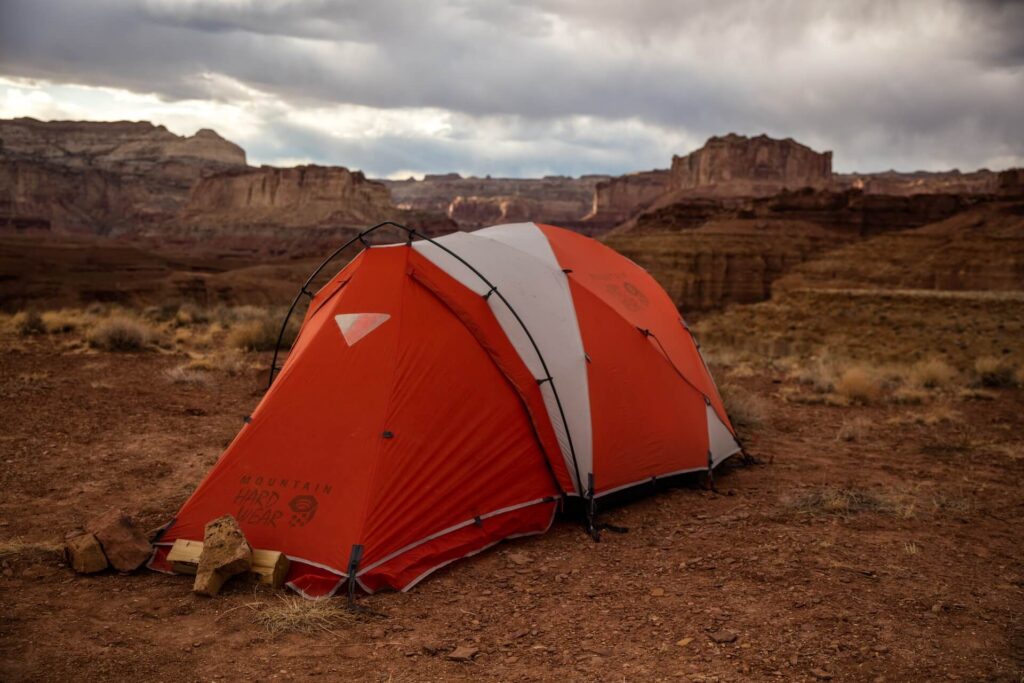
Tips for Staying Cool While Camping in the Desert Regions of USA
Camping in the desert regions of the USA can be challenging due to the extreme temperatures and lack of shade. However, with some preparation and planning, you can stay cool and comfortable during your camping trip.
How to stay hydrated
Staying hydrated is crucial when camping in the desert regions of the USA. The dry air and high temperatures can cause you to sweat more and lose fluids faster, so it is important to drink plenty of water. It is recommended to drink at least one gallon of water per person per day, and even more if you are hiking or engaging in other physical activities. To ensure that you have enough water, bring a water filter or purification tablets to treat water from natural sources, or bring enough bottled water for your entire trip.
Clothing and accessories to wear
Wearing appropriate clothing and accessories can also help you stay cool while camping in the desert regions of the USA. Choose lightweight, breathable fabrics like cotton or linen, and avoid dark colors that can absorb heat. A wide-brimmed hat and sunglasses can protect your face and eyes from the sun’s rays, and long-sleeved shirts and pants can protect your skin from sunburn and bug bites. It is also recommended to wear a bandana or neck gaiter that you can wet with water and place around your neck to help cool your body temperature.
Creating shade at your campsite
Creating shade at your campsite can also help you stay cool during the hottest parts of the day. A pop-up canopy or sun shelter can provide shade and a place to relax during the midday heat. You can also set up a hammock or lounge chair in a shaded area to stay cool and comfortable. Additionally, placing a wet towel or shirt over your tent or sleeping area can help cool the inside temperature.
Top Campgrounds in the Desert Regions of USA
If you’re planning a camping trip to the desert regions of the USA, you have plenty of campgrounds to choose from. However, it can be overwhelming to decide which one to pick, as each campground has its own unique features, amenities, and facilities. In this section, we’ll provide an in-depth overview of some of the top campgrounds in the desert regions of the USA, including information on their location, amenities, and reservation details.

1. Joshua Tree National Park
Located in Southern California, Joshua Tree National Park is a stunning desert landscape that features towering rock formations, cactus gardens, and mesmerizing sunsets. The park has nine campgrounds with over 500 campsites, ranging from primitive sites to those with full RV hookups. Joshua Tree offers a unique camping experience, as the park is known for its dark skies, making it one of the best places for stargazing in the country.

2. Saguaro National Park
Located in Arizona, Saguaro National Park is home to the iconic saguaro cactus and offers hiking trails, wildlife viewing, and stargazing opportunities. The park has two campgrounds with a total of 120 campsites, ranging from tent sites to those with electric and water hookups. Saguaro National Park is a great choice for those who want to experience the beauty of the Sonoran Desert, while still being close to modern amenities like restaurants and shopping.

3. Death Valley National Park
Located in California, Death Valley National Park is known for its extreme temperatures, sand dunes, and unique geological formations. The park has nine campgrounds with over 700 campsites, ranging from primitive sites to those with full RV hookups. Death Valley is a popular destination for winter camping, as the temperatures are milder and more pleasant than in the summer months. However, even in the winter, visitors should be prepared for the harsh desert climate.

4. Red Rock Canyon State Park
Located in California, Red Rock Canyon State Park is a scenic desert landscape that offers hiking trails, rock climbing opportunities, and stunning views. The park has 50 campsites with a mix of tent sites and RV sites, and offers modern amenities like showers, restrooms, and potable water. Red Rock Canyon State Park is a great choice for those who want to experience the beauty of the Mojave Desert without venturing too far from civilization.

5. Big Bend National Park
Located in Texas, Big Bend National Park is a remote and rugged desert landscape that features the Rio Grande River, canyons, and hot springs. The park has three campgrounds with a total of 150 campsites, ranging from primitive sites to those with full RV hookups. Big Bend is a great choice for those who want to experience the beauty and isolation of the Chihuahuan Desert.
6. Anza-Borrego Desert State Park
Located in Southern California, Anza-Borrego Desert State Park is the largest state park in California and features stunning desert wildflowers, hiking trails, and off-road adventures. The park has a variety of campgrounds with over 400 campsites, ranging from primitive sites to those with full RV hookups. Anza-Borrego is a great choice for those who want to experience the beauty of the Colorado Desert, while still being close to modern amenities like restaurants and shopping.
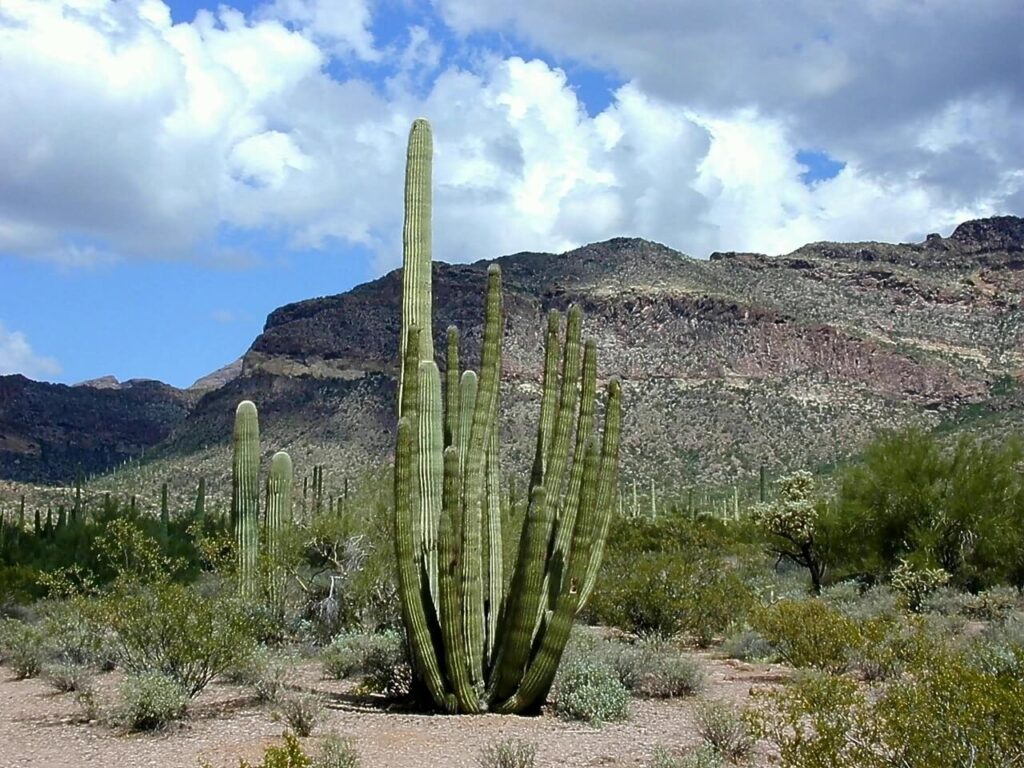
7. Organ Pipe Cactus National Monument
Located in Arizona, Organ Pipe Cactus National Monument is a protected area that features stunning landscapes, rare plants, and unique wildlife. The park has two campgrounds with a total of 208 campsites, ranging from primitive sites to those with electric and water hookups. Organ Pipe is a great choice for those who want to experience the beauty of the Sonoran Desert and learn about the unique ecosystems found in the area.
How to Prepare for a Safe Camping Trip in the Desert Regions of USA
When planning a camping trip in the desert regions of the USA, it’s important to take certain precautions to ensure a safe and enjoyable experience. Here are some tips for preparing for a safe camping trip in the desert:
A. Safety Precautions to Take:
- Research the area and weather conditions: Make sure to research the specific desert region you’ll be camping in and check weather forecasts regularly to be aware of any extreme heat, flash floods, or other potential dangers.
- Bring appropriate gear and clothing: Be sure to pack clothing and gear appropriate for the climate, including sun protection, hats, and lightweight clothing. Bring plenty of water and electrolyte-rich drinks to stay hydrated.
- Watch out for wildlife: Desert regions are home to a variety of wildlife, including snakes, scorpions, and spiders. Be sure to keep an eye out for any potentially dangerous animals and keep a safe distance from them.
B. Emergency Preparedness:
- Bring a first aid kit: Pack a first aid kit with essential items like bandages, antiseptic, and pain relievers.
- Have a communication plan: Make sure to let someone know where you’ll be camping and when you plan to return. Bring a fully charged phone, a GPS device, or a map and compass to navigate in case of emergency.
- Be prepared for emergencies: In case of an emergency, be sure to have a plan for seeking medical attention, such as knowing the location of the nearest hospital or emergency services.
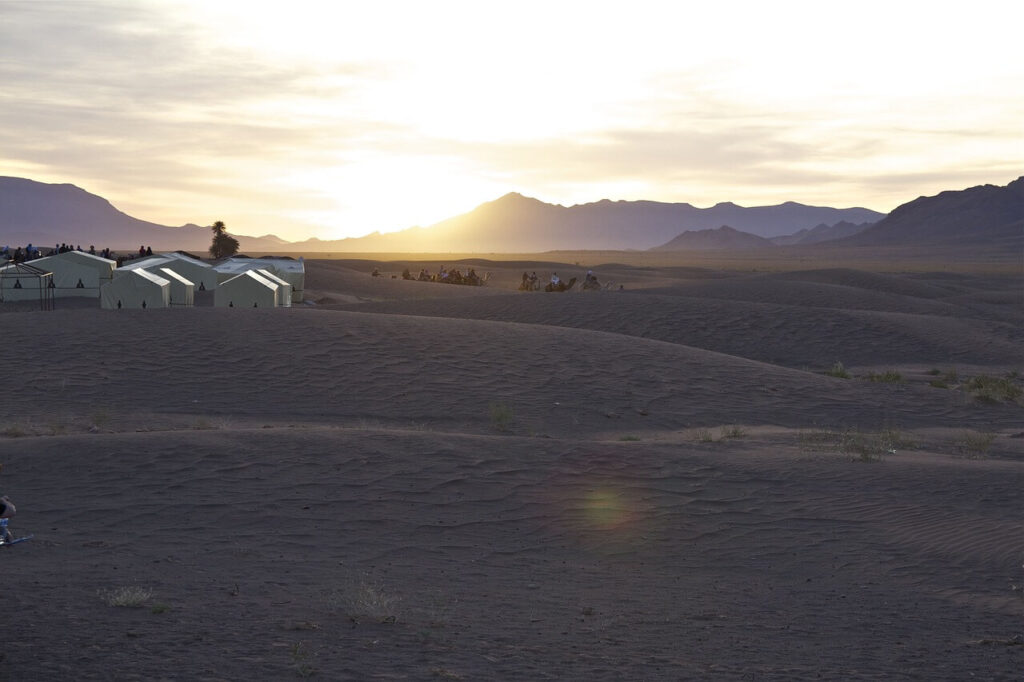
Best Hiking Trails Near Campsites in the Desert Regions of USA
If you’re planning a camping trip in the desert regions of the USA, there are plenty of hiking trails nearby that offer breathtaking views and challenging terrain. Here’s a closer look at some of the best hiking trails near campsites in the desert:
- Grand Canyon National Park: The Grand Canyon offers a range of hiking trails, from easy walks along the rim to challenging multi-day hikes into the canyon. Popular trails include the Bright Angel Trail, South Kaibab Trail, and North Kaibab Trail.
- Joshua Tree National Park: Joshua Tree offers a variety of hiking trails, ranging from easy walks to strenuous hikes. Popular trails include the Lost Palms Oasis Trail, Ryan Mountain Trail, and the Barker Dam Trail.
- Zion National Park: Zion features a variety of hiking trails, from short walks to steep climbs. Popular trails include the Angels Landing Trail, The Narrows, and the Emerald Pools Trail.
- Arches National Park: Arches is home to over 2,000 natural sandstone arches, making it a popular destination for hikers. Popular trails include the Delicate Arch Trail, Devils Garden Trail, and the Windows Loop Trail.
- Bryce Canyon National Park: Bryce Canyon is known for its distinctive hoodoos, or tall, thin spires of rock. Popular trails include the Navajo Loop Trail, Queens Garden Trail, and the Peekaboo Loop Trail.
- Death Valley National Park: Despite its name, Death Valley is a beautiful and unique destination for hiking. Popular trails include the Golden Canyon Trail, Badwater Basin Salt Flats, and the Mesquite Flat Sand Dunes.
- Red Rock Canyon National Conservation Area: Located just outside of Las Vegas, Red Rock Canyon offers a variety of hiking trails with stunning views of the red rock formations. Popular trails include the Calico Hills Trail, Ice Box Canyon Trail, and the Keystone Thrust Trail.

How to Build a Campfire in the Desert Regions of USA
Building a campfire can be a quintessential part of the camping experience, but in desert regions of the USA, it’s important to take extra precautions due to the dry climate and increased risk of wildfires. Here are some guidelines for building a safe and responsible campfire in the desert:
Fire restrictions in the desert:
Before starting a fire, it’s important to research any fire restrictions in the area. Some parks and campgrounds may prohibit fires altogether, while others may allow them only in designated fire pits or during specific times of the year. Make sure to check with park rangers or campground staff for up-to-date information on fire regulations.
Safe practices for building a fire:
When building a fire in the desert, it’s important to follow some basic safety practices. First, choose a location that is clear of any vegetation or flammable materials, and dig a pit at least a foot deep to contain the fire. Clear a perimeter around the pit and remove any debris or dry brush that could catch fire. Use only small sticks and twigs to start the fire, and gradually add larger pieces of wood as the fire grows. Never leave the fire unattended, and always have water or a shovel on hand to extinguish the fire if necessary.
Alternatives to campfires:
In areas where fires are prohibited or during times of high fire danger, there are alternative ways to enjoy the campfire experience. One option is to bring a portable propane or gas campfire, which can provide heat and light without the risk of sparks or embers. Another option is to use a camping stove or grill to cook food or provide warmth.

What to Pack for a Family Camping Trip in the Desert Regions of USA
Camping in the desert regions of the USA can be a fun and exciting adventure for families. To ensure a comfortable and enjoyable trip, it’s important to pack the right gear and plan activities that will keep everyone entertained. Here are some tips for packing for a family camping trip in the desert:
Family-friendly campgrounds:
When planning a family camping trip, it’s important to choose a campground that is suitable for children. Look for campgrounds with amenities such as playgrounds, swimming pools, and hiking trails. Some campgrounds may also offer organized activities for kids, such as nature walks or crafts.
Recommended gear for families:
When packing for a family camping trip, it’s important to bring gear that will keep everyone comfortable and safe. Essentials include a tent, sleeping bags, sleeping pads, cooking gear, and food. For families with young children, a portable crib or playpen can be helpful. It’s also important to bring plenty of water and sun protection, such as hats and sunscreen.
Activities for kids:
To keep kids entertained during a camping trip in the desert, plan activities that will engage their curiosity and sense of adventure. Nature walks, scavenger hunts, and stargazing can be fun and educational for children. Bring along books or field guides about local plants and animals to help kids learn about the desert ecosystem. Depending on the campground, there may also be opportunities for swimming, fishing, or boating.
Overall, a family camping trip in the desert can be a memorable and rewarding experience for everyone. By choosing a family-friendly campground, packing the right gear, and planning fun activities, you can create a trip that will be enjoyed by all.
Conclusion
In conclusion, camping in the desert regions of the USA offers a unique and unforgettable experience for outdoor enthusiasts. From exploring scenic hiking trails to stargazing under clear skies, there are plenty of adventures to be had in the desert. However, it’s important to take safety precautions and pack the right gear to ensure a comfortable and enjoyable trip. With careful planning and preparation, a camping trip in the desert can be an opportunity to connect with nature, learn about desert ecosystems, and create lasting memories with friends and family.
Read more articles here.


